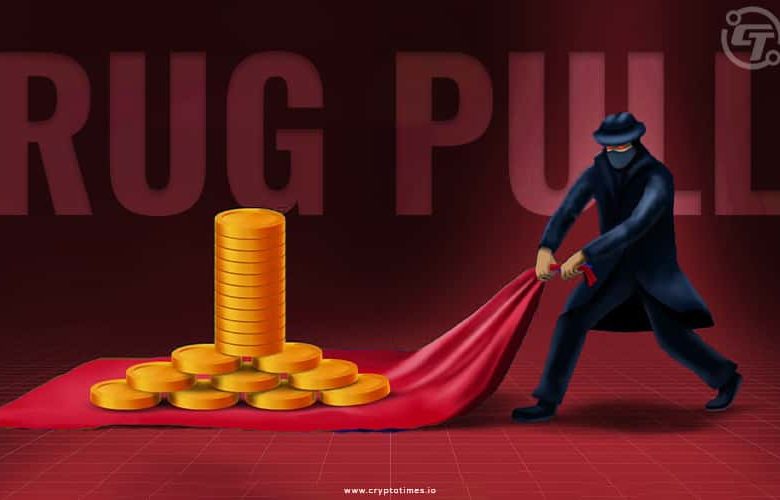Guarding Your Crypto Investments: Navigating Crypto Scams and Rug Pulls with Confidence

A crypto scam and a rug pull are types of fraudulent activities that take place in the cryptocurrency space. These scams target unsuspecting investors looking to capitalize on the growing digital asset market. Understanding the nature of these scams, the tactics employed by scammers, and the preventive measures that can be taken is essential for any investor looking to safely navigate the world of cryptocurrency.
Crypto Scam: A crypto scam is a broad term that encompasses various types of fraudulent schemes designed to deceive and manipulate investors into parting with their money or digital assets. Some common types of crypto scams include Ponzi schemes, phishing attacks, fake ICOs (Initial Coin Offerings), and pump-and-dump schemes.
- Ponzi schemes: A Ponzi scheme is an investment scam where returns are paid to existing investors from funds contributed by new investors, rather than from legitimate profits earned by the operation. One infamous example is BitConnect, a cryptocurrency lending platform that guaranteed high returns and used a multi-level referral system to incentivize users to recruit new investors. In 2018, it was revealed to be a Ponzi scheme, resulting in significant financial losses for many investors.
- Phishing attacks: Phishing scams involve scammers impersonating a legitimate company or service in an attempt to deceive users into revealing sensitive information or sending cryptocurrency to a fraudulent address. Scammers may send phishing emails or create fake websites that closely resemble a legitimate platform, luring users into entering their login credentials or private keys.
- Fake ICOs: In a fake ICO, scammers create a fraudulent cryptocurrency project with the sole purpose of collecting funds from investors. They often develop a convincing website, whitepaper, and marketing materials, but have no intention of delivering on their promises. The 2017 PlexCoin ICO, for example, raised over $15 million from thousands of investors before the SEC stepped in and shut it down, citing it as a fraudulent scheme.
- Pump-and-dump schemes: In these schemes, scammers artificially inflate the price of a low-market-cap cryptocurrency through coordinated buying and promotion, then sell their holdings once the price has spiked, causing the price to crash and leaving investors with significant losses.
Preventive measures against crypto scams:
- Conduct thorough research: Before investing in any cryptocurrency or project, investors should research the project’s whitepaper, the team behind it, and the technology involved. Reliable sources of information include well-established industry news websites, forums, and social media platforms.
- Verify the legitimacy of websites and emails: Investors should always double-check the URL of a website they are visiting, as phishing sites often use domain names that closely resemble the legitimate platform. Similarly, be cautious when clicking on links in emails and verify the sender’s email address.
- Use secure wallets and enable two-factor authentication (2FA): Store digital assets in reputable wallets, either hardware or software-based, and enable 2FA to protect your account from unauthorized access.
- Be cautious of guarantees and unrealistic returns: If an investment opportunity promises consistent high returns with little or no risk, it is likely a scam. Legitimate investments carry inherent risks and rarely guarantee specific returns.
Rug Pull: A rug pull is a type of scam specific to decentralized finance (DeFi) platforms, where developers or project owners abandon a project after raising funds or liquidity from investors. This typically occurs in decentralized token pools, where investors provide liquidity in exchange for tokens representing their share of the pool. The scammer then suddenly withdraws the underlying assets, leaving investors with worthless tokens.
Common tactics used in rug pulls include:
- Hype-building: Scammers often use aggressive marketing tactics to attract attention to their project, creating a sense of urgency and FOMO (Fear Of Missing Out) among potential investors.
- Short timeframes: Many rug pulls occur shortly after a project’s launch or liquidity pool creation, giving investors little time to properly evaluate the project before the scammers withdraw the funds.
- Anonymous developers: Scammers behind rug pulls often remain anonymous or use fake identities, making it difficult for investors to verify their legitimacy and hold them accountable.
- Smart contract vulnerabilities: Scammers may intentionally include vulnerabilities in the project’s smart contracts, enabling them to exploit the contract and drain funds from the liquidity pool.
Preventive measures against rug pulls:
- Analyze the project’s smart contracts: Investors should verify that a project’s smart contracts have been audited by a reputable third-party firm. Additionally, learning to read and understand smart contracts can help identify potential vulnerabilities or malicious code.
- Investigate the team behind the project: Verify the identities of the project’s developers and check their credibility, experience, and previous projects. Be cautious of projects with anonymous team members or those using fake identities.
- Monitor social media and community sentiment: Keep an eye on the project’s social media channels and online communities to gauge sentiment and identify potential red flags. Sudden changes in sentiment, excessive hype, or a lack of transparency can be warning signs of a potential rug pull.
- Diversify your investments: As with any investment, it’s essential to diversify your portfolio to minimize risks. Spreading your investments across multiple projects reduces the potential impact of a single rug pull on your overall portfolio.
In conclusion, crypto scams and rug pulls pose significant risks to investors in the cryptocurrency space. By understanding the tactics employed by scammers and adopting preventive measures such as conducting thorough research, verifying legitimacy, using secure wallets, and diversifying investments, investors can protect themselves from these fraudulent schemes and navigate the world of cryptocurrency with greater confidence.



